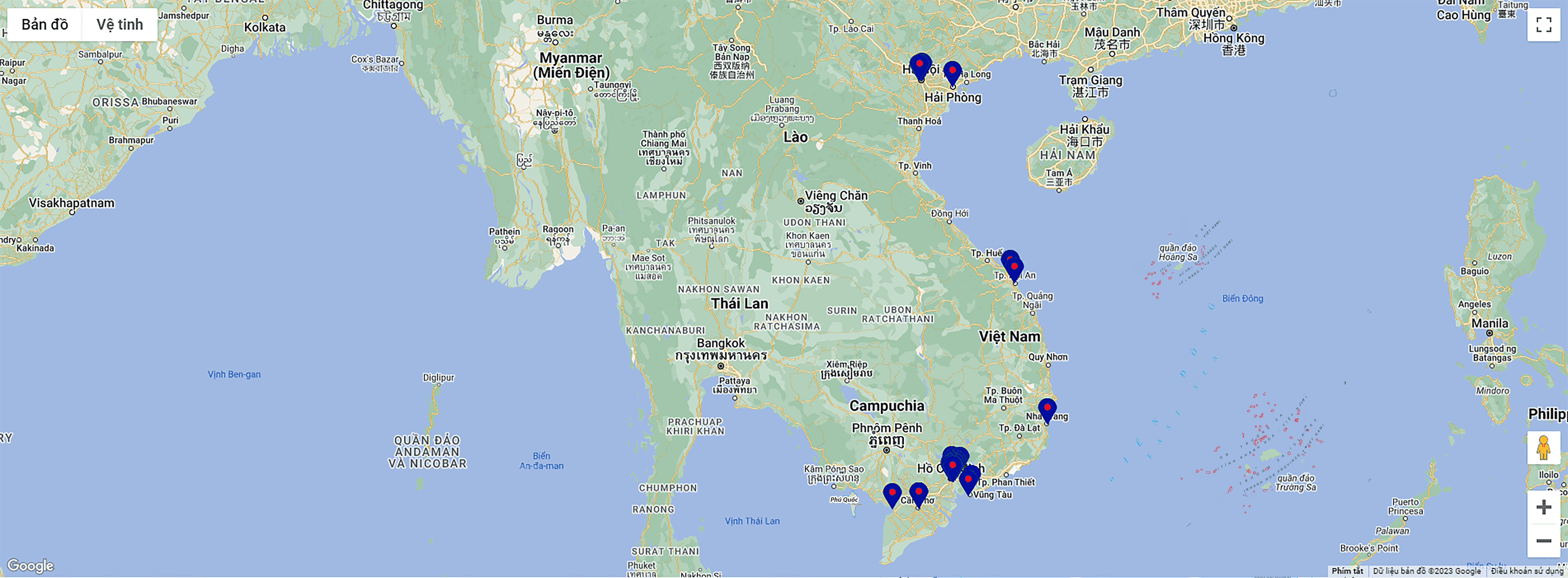Word form yêu cầu bạn phải nắm rõ các dạng của danh từ, động từ, tính từ và trạng từ để viết thành câu. Nếu nắm rõ các cách chia word form dưới đây cùng với việc rèn luyện nhiều, bạn sẽ không thấy dạng bài này quá phức tạp nữa.
Word form là gì?
Word form là những hình thái khác nhau của một từ, sử dụng ở các ngữ cảnh khác nhau. Có nhiều cách để biến đổi một từ sang danh từ, động từ, tính từ hoặc trạng từ. Một từ có thể trở thành danh từ, động từ, tính từ, trạng từ khi thêm các tiền tố và hậu tố để biến đổi.
Ví dụ:
Dưới đây là word form của từ fear:
| Word form | Từ loại | Dịch nghĩa |
| fear | noun | sự sợ hãi |
| fear | verb | sợ hãi |
| fearless | adjective | không sợ hãi, can đảm |
| fearlessness | noun | sự can đảm |
| fearsome | adjective | dễ sợ, dữ tợn |
| fearlessly | adverb | một cách can đảm, không sợ hãi |
| fearful | adjective | kinh khủng, ghê sợ |
| fearfulness | noun | sự tràn đầy nỗi sợ hãi |
>>> Tìm hiểu thêm: Từ loại tiếng Anh: Cách chuyển đổi từ loại trong tiếng Anh
Word form dạng danh từ
Danh từ thường đóng nhiều vai trò trong câu nên cách thành lập danh từ cũng đa dạng.
1. Vị trí của danh từ trong câu
• Danh từ làm chủ ngữ và đứng trước động từ.
Ví dụ:
√ My mom is cooking. (Mẹ tôi đang nấu ăn.)
• Danh từ là tân ngữ trực tiếp cho động từ và đứng sau động từ.
Ví dụ:
√ My friends give me a lot of books. (Các bạn tặng tôi rất nhiều cuốn sách.)
• Danh từ đứng sau tính từ sở hữu: my, your, our, their, his, her, its.
Ví dụ:
√ The person that you met is my friend. (Người bạn đã gặp là bạn của tôi.)
• Danh từ là tân ngữ cho giới từ và đứng sau giới từ.
Ví dụ:
√ My mom went to the supermarket with me yesterday. (Hôm qua mẹ đã đi siêu thị với tôi.)
• Danh từ đứng sau tính từ: wonderful, beautiful, nice…
Ví dụ:
√ Mary is a beautiful girl. (Mary là một cô gái xinh đẹp.)
• Danh từ là từ bổ ngữ cho chủ ngữ, đứng sau các động từ liên kết, động từ nối (linking verb) như to seen, to become, to be…
Ví dụ:
√ I am a student. (Tôi là một học sinh.)
• Danh từ đứng sau các mạo từ “a, an, the” hoặc “this, that, these, those, each, every, both, no, some, any, few, a little…”.
Ví dụ:
√ I am reading an interesting book. (Tôi đang đọc một cuốn sách thú vị.)
• Danh từ đóng vai trò bổ ngữ cho tân ngữ đứng trước.
Khi đứng sau các động từ như declare, name, elect, call, recognize, make, consider, appoint… danh từ có vai trò bổ ngữ cho tân ngữ đứng trước.
Ví dụ:
√ She is considered as the best student in her class. (Cô ấy được biết đến như một học sinh xuất sắc nhất trong lớp.)
2. Cách làm word form dạng danh từ
Để đưa một từ về danh từ, bạn có thể tuân thủ cách thêm các đuôi sau:
| Hậu tố | Ví dụ |
| -ation/-tion/-sion | alteration, demonstration, expansion, inclusion, admission, invitation, information, discussion, application, production, dedication… |
| -er | advertiser, driver, computer, cooker, examiner, builder, lawyer… |
| -ment | development, punishment, unemployment, arrangement, entertainment, establishment, payment, movement. |
| -ant/-ent | assistant, consultant, student, inhabitant, attendant, servant, consultant… |
| -age | breakage, wastage, package… |
| -al | denial, proposal, refusal, dismissal… |
| -ence/-ance | preference, dependence, interference attendance, acceptance, endurance… |
| -ery/-ry | bribery, robbery, misery, refinery, bakery… |
| -ism | Marxism, Maoism, Thatcherism… |
| -ship | leadership, relationship, membership, partnership, hardship, friendship, certainty, internship… |
| -ity/-ty | activity, royalty, security, personality, stupidity, nationality, opportunity… |
| -ness | illness, happiness, freshness, readiness, forgetfulness, sadness, blindness, weakness, preparedness, consciousness… |
| -cy | urgency, efficiency, frequency… |
| -or | owner, mentor, driver, doctor, editor, director, supervisor… |
>>> Tìm hiểu thêm: Bật mí cách nhận biết danh từ trong tiếng Anh hiệu quả
Word form dạng động từ
1. Vị trí của động từ trong câu
Vị trí điển hình nhất của động từ trong câu là đứng sau chủ ngữ nhằm diễn tả hành động của đối tượng được nói đến.
Ví dụ:
√ He drives car from Hue to Da Nang everyday. (Anh ấy lái xe từ Huế đi Đà Nẵng mỗi ngày.)
2. Cách chia word form dạng động từ
Dưới đây là công thức word form động từ bằng cách thêm các hậu tố.
| Hậu tố | Ví dụ |
| -ate | separate, appreciate, alternate, celebrate, graduate, congratulate, estimate, communicate, collaborate, delegate… |
| -ify | beautify, identify, clarify, specify, simplify, qualify, exemplify, modify, solidify, diversify… |
| ise/-ize | realize/ realize, rationalize, recognise, capitalize, modernize, dramatize, specialize, minimize, visualize… |
| -en | strengthen, frighten, widen, threaten, soften, shorten, sweeten… |
Ngoài ra, động từ còn có công thức làm word form khác bằng cách thêm tiền tố: -en + Noun/verb/adj → Verb
Ví dụ:
√ Danger → endanger.
√ Rich → enrich.
>>> Tìm hiểu thêm: Sau động từ là gì? Tổng hợp trọn bộ kiến thức cần nắm về động từ
Word form dạng tính từ
1. Vị trí của tính từ trong câu
• Tính từ đứng trước danh từ.
Ví dụ:
√ A handsome boy comes and smiles at me. (Một anh chàng đẹp trai đến và cười với tôi.)
• Tính từ đứng sau động từ to be và linking verbs (look, seem, sound, feel, taste, smell…).
Ví dụ:
√ She is lovely and kind. (Cô ấy thì đáng yêu và tốt bụng.)
2. Cách chia word form dạng tính từ
Tính từ có thể được tạo ra bằng cách thêm các hậu tố sau vào danh từ và động từ:
| Hậu tố | Ví dụ |
| -al/-ial | normal, presidential, industrial, cultural, personal, commercial… |
| -able/-ible | comfortable, comparable, readable, capable, incredible, considerable, invisible, adaptable, reliable, comprehensible… |
| -less | careless, endless, harmless, priceless, motionless, timeless, hopeless, fearless… |
| -y | rainy, angry, muddy, busy, sunny, wealthy, happy, scary… |
| -ic | romantic, classic, economic, toxic, heroic, organic, scientific, artistic… |
| -ful | careful, beautiful, wonderful, harmful, peaceful, thoughtful… |
| -ish | childish, foolish, British, Irish, selfish… |
| -ical | economical, aeronautical, comical, historical, alphabetical, musical, political, physical… |
| -ive, -ative | attractive, active, decisive, alternative, talkative, creative, positive, innovative, productive… |
| -eous, -ious, -ous | spontaneous, humorous, hideous, poisonous, ambitious, anxious, notorious, famous, dangerous, delicious, famous, fabulous… |
| -ed | interested, tired, excited, surprised… |
| -ing | exciting, touching, interesting… |
Lưu ý:
Một số tính từ có đuôi -ly thường bị nhầm là trạng từ như cowardly, friendly, manly, lively, lovely, smelly, (un) likely, miserly, scholarly, silly, ghastly…
Một số từ có đuôi -ly vừa là tính từ vừa là trạng từ như early, daily, weekly, yearly, nightly…
>>> Tìm hiểu thêm: Cách nhận biết và phân loại tính từ (adjective) trong tiếng Anh
Word form dạng trạng từ
1. Vị trí trạng từ trong câu
• Trạng từ đứng trước động từ thường.
Ví dụ:
√ She always does homework before 9 p.m. (Cô ấy luôn làm bài tập trước 9 giờ tối.)
• Trạng từ đứng giữa trợ động từ và động từ thường.
Ví dụ:
√ I have recently finished my homework. (Tôi gần như đã hoàn thành bài tập.)
• Trạng từ đứng giữa động từ to be và tính từ.
Ví dụ:
√ She is very pretty. (Cô ấy rất xinh đẹp.)
• Trạng từ đứng sau “too” và trước “enough”.
Ví dụ:
√ He runs too fastly. (Cậu ấy chạy quá nhanh.)
√ He plays football well enough to become a footballer. (Cậu ấy chơi bóng đá tốt đến nỗi có thể trở thành cầu thủ bóng đá.)
2. Cách chia word form dạng trạng từ
Công thức word form cơ bản nhất để thành lập trạng từ đó là thêm đuôi -ly vào tính từ:
Ví dụ: Carefully, anxiously, accurately, professionally, luckily, cautiously, greedily…
Ngoài công thức trên, bạn cần để ý trong quá trình sử dụng tiếng Anh để nhận ra trạng ngữ vì chúng không có quy tắc cụ thể khác.
Ví dụ:
√ Good → well
√ Early → early
√ Hard → hard
>>> Tìm hiểu thêm: Khám phá vị trí của trạng từ ở đâu trong câu
Cách làm dạng bài word form
Để chinh phục được dạng bài word form, bạn cần thuộc hai bước sau:
• Bước 1: Bạn cần đọc đề kỹ, quan sát trước và sau chỗ trống để xác định từ loại cần điền. Bạn hãy nhớ nguyên tắc sau: tính từ bổ nghĩa cho danh từ, trạng từ bổ nghĩa động từ đi cùng.
• Bước 2: Nhận dạng từ loại theo các công thức word form và chọn đáp án đúng.
Bài tập word form
Dùng các từ trong ngoặc đúng từ loại phù hợp với câu:
1. The……. gave us a….. of how the new machine works. (represent, demonstrate)
2. The old man has no………. of what happened yesterday morning. (recollect)
3. The……. team went through to the semi-finals. (win)
4. I had problems coping with the……. in Central Africa. (humid)
5. When I started university, I got a monthly……… from my parents. (allow)
6. All major channels provided……… of the inauguration. (cover)
7. My sister’s sudden……….. came as a surprise to everyone. (depart)
8. The managers are……….. to agree to the workers’ demands. It would ruin the company. (like)
9. She became the………. director of the largest company in town. (manage)
10. Our success is……….. on everyone’s hard work. (depend)
11. It was the…………. sound of a train coming towards us. (mistake)
12. There is no……… between the two types of virus. (similar)
13. I can’t understand how he can eat so much without gaining any…….. (weigh)
14. The doctor said that the athlete’s………. would take months. (recover)
15. The claims he brought forward were completely……….. (base)
16. This tablet will allow you to access your files …………. you are. (where)
17. An………. of mine works at the department store. (acquaint)
18. I looked up her number in the phone………… (direct)
19. I told him to………….. his voice. (low)
20. All ………. will be instructed about the takeover tomorrow. (employ)
Đáp án word form
| 1. representative, demonstration | 2. recollection | 3. winning | 4. humidity |
| 5. allowance | 6. coverage | 7. departure | 8. unlikely |
| 9. managing | 10. dependent | 11. unmistakable | 12. similarity |
| 13. weight | 14. recovery | 15. baseless | 16. wherever |
| 17. acquaintance | 18. directory | 19. lower | 20. employees |
Sau khi đã đọc hết bài và làm bài tập, ILA hy vọng bạn đã hiểu rõ tất tần tật về word form. Những word form này rất thường sử dụng. Vì vậy, bạn hãy học thêm vài lần nếu vẫn chưa nhớ hết dạng word form của một từ. Chúc bạn luôn thành công ở những chặng đường chinh phục môn tiếng Anh này nhé.









